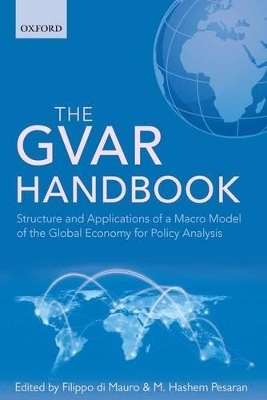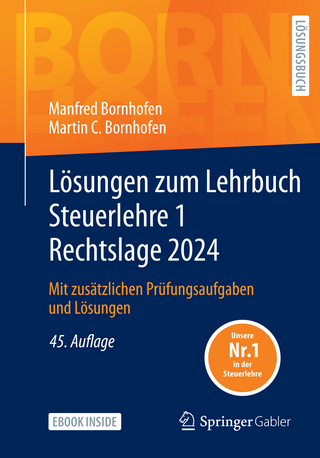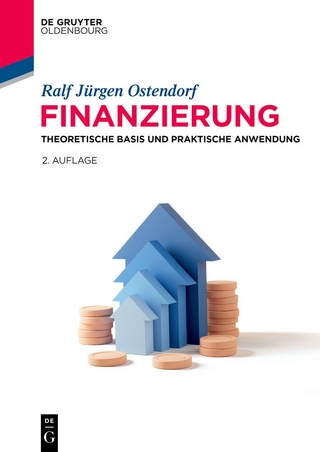
The GVAR Handbook
Oxford University Press (Verlag)
978-0-19-967008-6 (ISBN)
The GVAR is a global Vector autoregression model of the global economy. The model was initially developed in the early 2000 by Professor Pesaran and co-authors, for the main purpose of analysing credit risk in a globalised economy. Starting from mid-2000 the model was substantially enlarged in the context of a project financed by the ECB, to comprise all major economies and the Euro area as a whole. The purpose of this version was to exploit the rich modelisation of international linkages in order to simulate and analyse global macro scenarios of high policy interest.
The rich, yet manageable, specification of international linkages has stimulated a vast literature on the GVAR. Since early 2011, the basic model - and its data base - has also available on a dedicated GVAR-Toolbox website with an easy-to-use interface allowing practical applications by an extended audience, as well as more complex analysis by the expert public.
The book provides an overview of the extensions and applications of the GVAR which have been developed in recent years. Such applications are grouped in three main categories: 1) International transmission and forecasting; 2) Finance applications; and 3) Regional applications. By using a language which is accessible to not econometricians, the book reaches out to the extended audience of practitioners and policy makers interested in understanding channels and impacts of international linkages.
Filippo di Mauro is Senior Adviser in the Research Department of the European Central Bank (ECB). He has published in academic journals such as the Journal of Applied Econometrics and Economic Policy. His work focuses on two main areas: Competitiveness assessment via firm level data; and Global linkages and business cycle forecast, including firm level information extraction. He is chairman of CompNet, a competitiveness research network among EU central banks. He has almost 30 years of applied economic experience as economist in Central Banks (ECB, 1998-present, Bank of Italy, 1984-1990, 1996-98) and International Development organizations (Asian Development Bank, 1990-94, IMF, 1986-88, 1994-96). Over the period 1998-2010 he directed international economic analysis in the Department of Economics at the ECB. An economics graduate of University of Rome, he holds an MA and a PhD in Economics, from the University of Chicago and the American University, respectively. M. Hashem Pesaran is Professor of Economics at the University of Cambridge, John Elliott Chair at the University of Southern California, and a Professorial Fellow of Trinity College. Previously he has been the head of the Economic Research Department of the Central Bank of Iran, the Under-Secretary of the Ministry of Education, Iran, Professor of Economics at the University of California at Los Angeles, and a Vice President at the Tudor Investment Corporation. Professor Pesaran is the founding editor of the Journal of Applied Econometrics and has held visiting positions at Harvard University, UCLA, University of Pennsylvania, and the University of Southern California. He has over 189 publications in refereed journals and chapters in books in the various areas of econometrics, empirical finance and macroeconomics, and the Iranian economy. He is a Fellow of the Econometric Society, a Fellow of the British Academy, and the recipient of a number of prizes for best articles.
1. Introduction ; 2. The Basic GVAR DdPS Model ; INTERNATIONAL TRANSMISSION AND FORECASTING ; 3. Global Recessions and Output Interdependencies in a GVAR Model of Actual and Expected Output in the G7 ; 4. The GVAR Approach to Structural Modelling ; 5. External Shocks and International Inflation Linkages ; 6. International Business Cycles and the Role of Financial Markets ; 7. Using Global VAR Models for Scenario-based Forecasting and Policy Analysis ; 8. Short and medium-term forecasting using 'pooling' techniques ; FINANCE APPLICATIONS ; 9. Nowcasting Quarterly Euro Area GDP Growth using a Global VAR Model ; 10. Macroprudential Applications of the GVAR ; 11. Modelling Sovereign Bond Spreads in the Euro Area: A Non-linear Global VAR Model ; 12. The International Spillover of Fiscal Spending on Financial Variables ; REGIONAL APPLICATIONS ; 13. China's Emergence in the World Economy and Business Cycles in Latin America ; 14. Does One Size Fit All? Modelling Macroeconomic Linkages in the West African Economic and Monetary Union ; 15. Competitiveness, External Imbalances, and Economic Linkages in the Euro Area ; 16. Forecasting the Swiss Economy with a Small GVAR Model ; 17. Regional Financial Spillovers Across Europe ; 18. Conclusion
| Zusatzinfo | 48 Figures, 20 Tables |
|---|---|
| Verlagsort | Oxford |
| Sprache | englisch |
| Maße | 163 x 241 mm |
| Gewicht | 608 g |
| Themenwelt | Wirtschaft ► Betriebswirtschaft / Management ► Finanzierung |
| Wirtschaft ► Volkswirtschaftslehre ► Makroökonomie | |
| Wirtschaft ► Volkswirtschaftslehre ► Ökonometrie | |
| ISBN-10 | 0-19-967008-0 / 0199670080 |
| ISBN-13 | 978-0-19-967008-6 / 9780199670086 |
| Zustand | Neuware |
| Haben Sie eine Frage zum Produkt? |
aus dem Bereich


